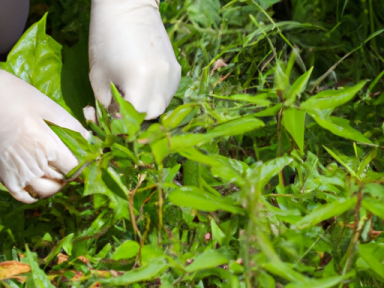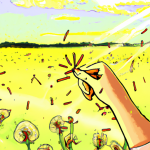
Harvesting Wild Nettles: A Health Boost in Your Backyard
If there’s one plant that can truly be labeled as a hidden gem in the wild, it’s the humble nettle. While commonly regarded as a pesky weed due to its stinging hairs, the truth is that wild nettles are incredibly nutritious and versatile, offering a range of health benefits and culinary uses. In this article, we’ll explore why you should consider harvesting wild nettles and how to do so safely and responsibly.
The Health Benefits of Wild Nettles
Before we delve into the details of harvesting wild nettles, let’s take a moment to appreciate its remarkable health benefits. Nettles are packed with essential vitamins and minerals, including A, C, and K, as well as iron, magnesium, and calcium. They are also a great source of antioxidants, which can help protect against chronic diseases.
Nettles have long been used for medicinal purposes, known to alleviate allergies, reduce inflammation, and boost the immune system. They can also aid in digestion, promote healthy skin, and even support hormone balance. With these impressive health benefits, it’s no wonder that nettles have been used in traditional medicine for centuries.
The Culinary Uses of Wild Nettles
Aside from their numerous health benefits, nettles also offer a wide range of culinary possibilities. When harvested and prepared correctly, their flavor is often compared to spinach or kale, with a slight earthy taste.
Nettles can be incorporated into a variety of dishes, such as soups, stews, pastas, and teas. They can be used as a replacement for other leafy greens in recipes, adding a unique twist and nutritional boost. Nettle tea, in particular, is a popular choice due to its soothing and detoxifying properties.
Safe and Responsible Harvesting
Now that you’re aware of the health benefits and culinary potential of wild nettles, it’s time to learn how to harvest them safely. The key to safe harvesting is to wear protective gloves, long sleeves, and pants to prevent the stinging hairs from coming into contact with your skin. Additionally, it’s best to harvest young nettles in the spring before they reach their full height.
When collecting nettles, choose areas away from roadsides and industrial areas to avoid potential contamination. Look for vibrant green leaves and avoid those that appear wilted or damaged. It’s important to remember that wild nettles, while beneficial, should be consumed in moderation, just like any other plant-based food.
After harvesting, carefully rinse the nettles in cold water to remove any dirt or debris. Blanching or steaming the leaves for a few minutes will neutralize the stinging hairs, making them safe to handle and consume. Once cooked, you can use nettles in various recipes or dry them for future use.
The Time is Ripe to Harvest Nettles
With their abundance of health benefits and culinary uses, wild nettles are a valuable addition to any homesteader’s pantry. By harvesting them sustainably and incorporating them into your diet, you can take a proactive approach to your health and well-being.
So, gear up, venture into the wild, and start harvesting. Embrace the power of nettles and unlock their potential for nourishing your body naturally.



GIPHY App Key not set. Please check settings